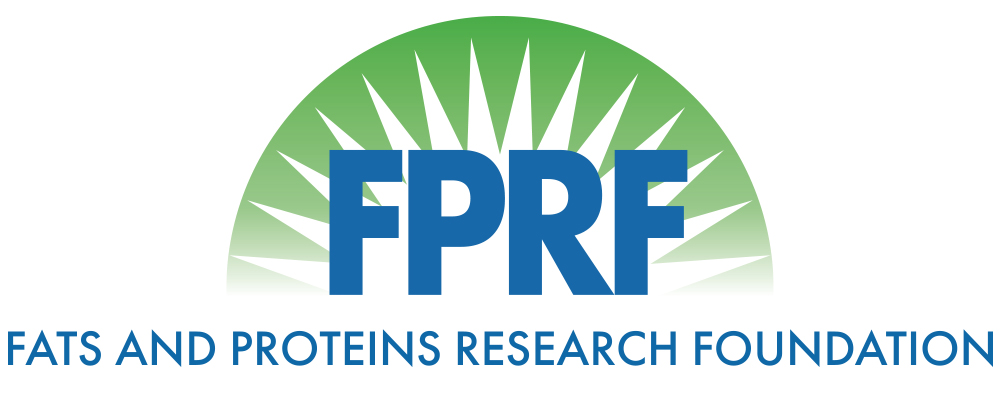Determination of D- and z- values for Salmonella ssp. in Rendered Products
Title: Determination of D- and z- values for Salmonella ssp. in Rendered Products
Principal Investigator: Mindy Brashears, Texas Tech University
Keywords: Salmonella, D and z values, high-fat rendering raw materials, thermal inactivation, FSMA, food safety, microbiology, 2014, Brashears
Year: 2014
Objective: To determine the D- and z- values to inactivate a Salmonella spp. cocktail artificially inoculated in a high fat beef processing by-product subjected to rendering-like conditions at pre-determined temperatures covering the rendering process from 55 to 121°C.
Lay Summary/Industry Summary:
A 5-strain Salmonellacocktail including strains isolated from animals or associated with human illness was prepared and mixed with grounded high fat beef trimmings prior to subjection to rendering-like thermal treatment conditions by the use of a circulating bath. The raw material samples were packaged and immersed in either water or silicon oil at established constant temperatures for specified treatment times. Surviving salmonellae were enumerated by plating serial dilutions in media sensible for detection of stressed or injured cells. The D values of Salmonella at each of the temperatures selected were calculated from the negative inverse slope of the concentration (log10 cfu/g) plotted against the time to the treatment. The z values were determined from the negative inverse slope of the log10 of the D values plotted against the temperatures selected. The thermal death curves show D values for 60 to 95°C (low temperature range) of 2.17 to 0.23 min to destroy 1 log of Salmonella, and for the high temperature range of 100 to 121°C were 0.23 to 0.099 min in the high-fat rendering raw material. The z values derived from this information were 38.61 and 40.82°C, for the low and high temperature treatments, respectively. This information can be used in combination with the thermal processing schedule of a rendering facility to evaluate the accumulated lethality of the process. Online tools such as the NAMI Lethality Calculation Tool could be used to estimate actual pathogen reductions. Thermal lethality data for Salmonella reductions in high-fat rendering raw materials, will help animal feed processors to design adequate thermal processing schedules and support critical control points that ensure safety in the final products. Validated processes will be useful to support risk-based preventive control programs in compliance with the new FDA-FSMA rules for animal food.
Scientific Abstract: Salmonella is the leading cause of bacterial foodborne illness in the United States. Thermal processing can be used to reduce Salmonella in meat and poultry products by accumulative lethality in processing schedules. The USDA-FSIS has set Salmonella lethality performance standards for thermally processed products at 6.5 to 7.0 log reduction ofSalmonella for meat and poultry containing products, respectively. However, performance standards for meat processing by-products that may potentially harbor significantly higher Salmonella loads have not been set. The goal of this study was to determine the D and z values for thermal inactivation of a Salmonella cocktail in high-fat beef trimmings as a model system at pre-determined temperatures from 60°C to 121°C. A 12-h culture of Salmonella cocktail (108 CFU/mL) including strains isolated from animals or associated with human illness was prepared and mixed with the grounded high fat beef trimmings prior to thermal treatment. The meat samples were packaged and immersed in either water or silicon oil at established temperatures. Surviving salmonellae were enumerated by plating serial dilutions in duplicate on XLD plates overlaid with TSA and incubated at 37°C for 24 h. D values of Salmonella at each temperature were calculated from the negative inverse slope of the log10 (cfu/g) vs. time plot. The z value was determined from the negative inverse slope of the log10 (D) vs. temperature plot. The thermal death curves show D values for 60 to 95°C (low temperature range) of 2.17 to 0.23 min, and for the high temperature range of 100 to 121°C were 0.23 to 0.099 min in the high-fat rendering raw material. The z values were 38.61 and 40.82°C, for low and high temperature treatments. Thermal lethality data for Salmonella reductions in high-fat rendering raw materials, will help animal feed processors to design adequate thermal processing schedules and support critical control points that ensure safety in the final products.
Publications: Alejandra Ramirez-Hernandez, A., Inestroza, B., Sanchez-Plata, M., Parks, A., Alejandro Echeverry, A. and M. Brashears. 2016. Thermal Inactivation D and z-Values of Salmonella in High-fat Raw Materials for Rendering. IAFP Annual Meeting. St. Louis, MO. https://iafp.confex.com/iafp/2016/webprogram/Paper12241.html
